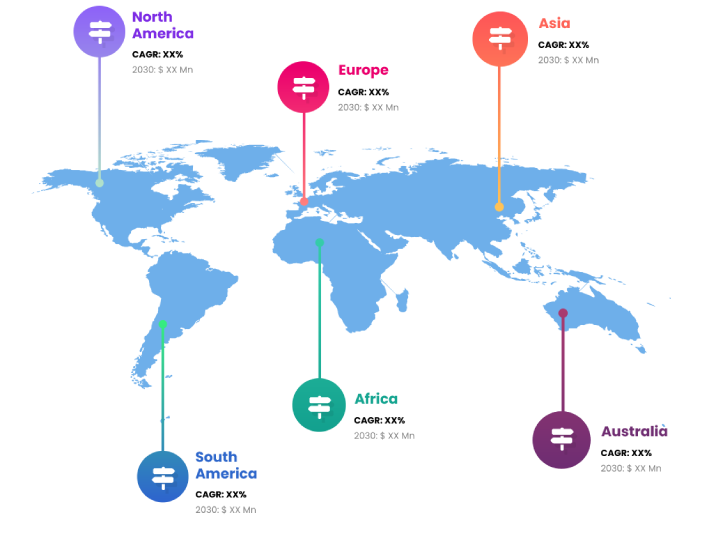
With more and more surgeries being done all over the world, there will be a need for simulation goods to help doctors avoid or reduce surgical mistakes. This is driving the industry forward. Minimally invasive surgical procedures are becoming more popular as technology improves. For a growing number of surgical operations, minimally invasive methods are rapidly replacing more traditional approaches. Particular psychomotor abilities are necessary for the execution of minimally invasive therapeutic techniques. One effective method for honing these abilities is through the use of simulations. Minimally invasive operations are taught and practiced using a variety of simulation modalities. Therefore, the market is being propelled by the increasing demand for minimally invasive surgical treatments.
A global emergency has been declared as a result of the COVID-19 pandemic. Governments around the world have restricted non-essential medical treatments in an effort to save lives and preserve personal protective equipment (PPE). As a result, the amount of elective surgeries performed around the world came to a halt, and surgical trainees had many fewer cases to learn from. During the COVID-19 pandemic, the virtual simulation was used to hone and improve patient care and procedural skills. Residents have less access to operating rooms and fewer elective procedures as a result of the pandemic, which has cut into their prospects for traditional medical apprenticeship training.
The market has been experiencing growth due to the increasing demand for surgical training and the urgent need to find solutions that prioritize patient safety. This has coincided with the full implementation of simulation training in healthcare in recent years. The importance of eliminating medical errors, which can be accomplished through medical simulation, is highlighted by the fact that around 440,000 persons in the US die as a result of medical mistakes.
Robotic simulators, cadavers, tabletop, and virtual reality (VR) have all seen increased demand for non-clinical surgical simulation as a result of growing concerns about patient safety and increasing constraints on current duty hours. If major corporations invested in research and development of cutting-edge surgical tools, medical experts would be able to do better procedures. As a result of advancements in 3D printing applications, such as the use of 3D models to supplement patient education, the most recent of these technologies, 3D printing, has recently made strides in the medical sector. The numerous benefits of these simulators over alternative forms prompted the surgical simulation industry to embrace 3D printing, which in turn fueled market expansion. Medical education now relies heavily on simulators, thanks to innovations like telesurgery and the incorporation of patient-specific anatomy.
Significant space needs, costly installation, operating, and maintenance expenses, high reimbursement costs, and opportunities all contributed to the market's growth fall. The growing concern for patient safety has also led to the development of alternatives to using real patients in surgical education, significantly limiting the hands-on experience that novice surgeons gain during their residency.
There has been a dramatic shift away from the old-fashioned approach to medical education in recent decades. Because of concerns about patient safety, this procedure is no longer applicable or ethical. Consequently, competency-based training and the widespread adoption of education based on simulations have supplanted it. Furthermore, compared to other types of simulation, 3D-printed surgical simulators offer numerous benefits. The use of 3D printing technology has made it possible to create simulators quickly and cheaply. In a similar vein, it is capable of providing precise and high-fidelity models for procedure simulation. Accordingly, the expanding use of 3D printing and additive manufacturing in surgical simulation is fueling the industry's expansion.
Ensuring patient safety is paramount, allowing practitioners to carry out surgical treatments without endangering patients. A relatively recent training method, simulation-based healthcare education was developed mainly to improve patient safety. So, practitioners can learn from their mistakes in a safe environment without endangering actual patients thanks to simulations. To help students prepare for operating on real patients, NHS Scotland updated its surgical training curriculum in November 2021 to include both digital and physical simulation.
Report Coverage
Global Surgical Simulation research report categorizes the market for global based on various segments and regions, forecasts revenue growth, and analyzes trends in each submarket. Global Surgical Simulation report analyses the key growth drivers, opportunities, and challenges influencing the global market. Recent market developments and Surgical Simulation competitive strategies such as expansion, product launch and development, partnership, merger, and acquisition have been included to draw the competitive landscape in the market. The report strategically identifies and profiles the key Surgical Simulation market players and analyses their core competencies in each global market sub-segments.
| REPORT ATTRIBUTES | DETAILS |
|---|---|
| Study Period | 2017-2031 |
| Base Year | 2023 |
| Forecast Period | 2023-2031 |
| Historical Period | 2017-2021 |
| Unit | Value (USD Billion) |
| Key Companies Profiled | CATHI GmBH, CAE Inc., Limbs & Things Ltd., LAERDAL MEDICAL AS, Mentice AB, VitaMed Ag, Simendo Company, 3D Systems Corporation, Medical-X, and Simulab Corporation |
| Segments Covered | • By Product |
| Customization Scope | Free report customization (equivalent to up to 3 analyst working days) with purchase. Addition or alteration to country, regional & segment scope |
Key Points Covered in the Report
- Market Revenue of Surgical Simulation Market from 2021 to 2031.
- Market Forecast for Surgical Simulation Market from 2021 to 2031.
- Regional Market Share and Revenue from 2021 to 2031.
- Country Market share within region from 2021 to 2031.
- Key Type and Application Revenue and forecast.
- Company Market Share Analysis, Surgical Simulation competitive scenario, ranking, and detailed company
profiles. - Market driver, restraints, and detailed COVID-19 impact on Surgical Simulation
Market
Competitive Environment:
The research provides an accurate study of the major organisations and companies operating in the global Surgical Simulation market, along with a comparative evaluation based on their product portfolios, corporate summaries, geographic reach, business plans, Surgical Simulation market shares in specific segments, and SWOT analyses. A detailed analysis of the firms' recent news and developments, such as product development, inventions, joint ventures, partnerships, mergers and acquisitions, strategic alliances, and other activities, is also included in the study. This makes it possible to assess the level of market competition as a whole.
List of Major Market Participants
CATHI GmBH, CAE Inc., Limbs & Things Ltd., LAERDAL MEDICAL AS, Mentice AB, VitaMed Ag, Simendo Company, 3D Systems Corporation, Medical-X, and Simulab Corporation
Primary Target Market
- Market Players of Surgical Simulation
- Investors
- End-users
- Government Authorities
- Consulting And Research Firm
- Venture capitalists
- Third-party knowledge providers
- Value-Added Resellers (VARs)
Market Segment:
This study forecasts global, regional, and country revenue from 2019 to 2031. INFINITIVE DATA EXPERT has segmented the global Surgical Simulation market based on the below-mentioned segments:
Global Surgical Simulation Market, By Products
Endoscopic
Laparoscopic
Cardiac
Orthopedic
Gynecological
Arthroscopic
Neurological
Global Surgical Simulation market, By Application
Metal
Polymer
Global Surgical Simulation Market, By End User
Hospitals
Academic Institutes
Specialty Centers
Global Surgical Simulation market, Regional Analysis
- Europe: Germany, Uk, France, Italy, Spain, Russia, Rest of Europe
- The Asia Pacific: China,Japan,India,South Korea,Australia,Rest of Asia Pacific
- South America: Brazil, Argentina, Rest of South America
- Middle East & Africa: UAE, Saudi Arabia, Qatar, South Africa, Rest of Middle East & Africa
You will get in-depth and extensive surgical simulation market market research and competitor analysis for your business to help you develop more profound insights into the surgical simulation market Market.
Through INFINITIVE Data Expert is a professional Market Research services, I will identify the surgical simulation market market size, demand & opportunities, growth rate, and target audience with a comprehensive analysis of your competitors.



